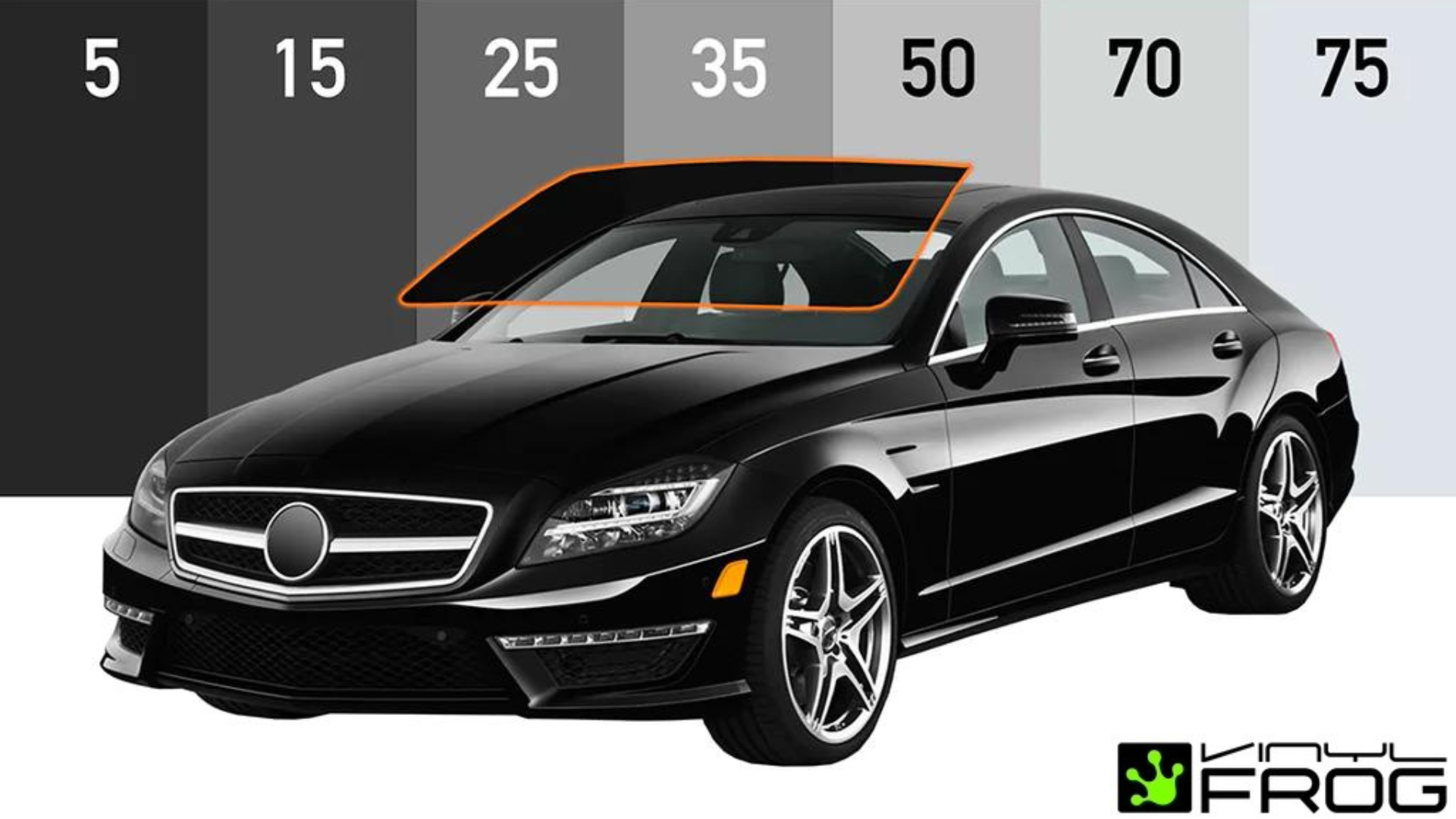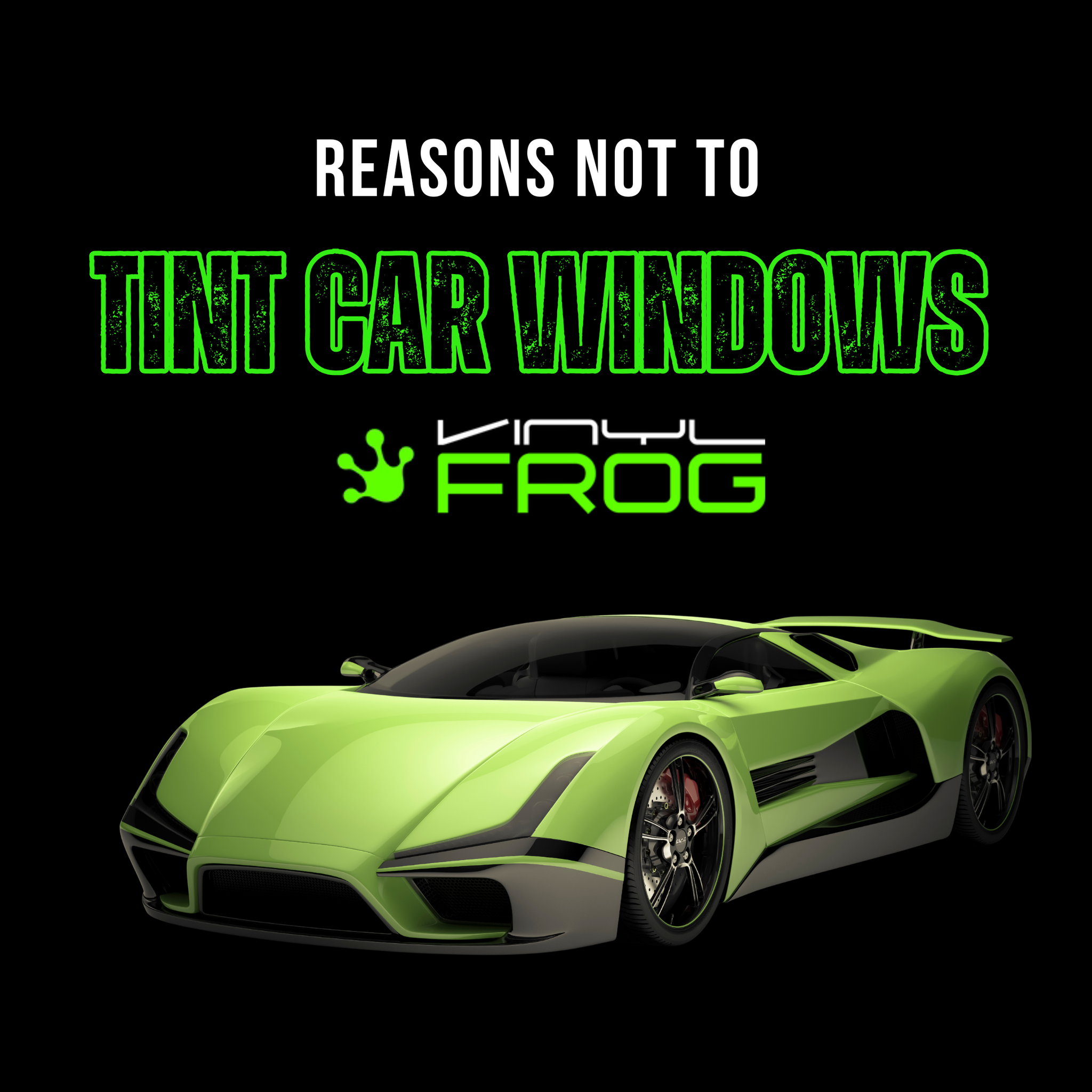Updated By Vinyl Frog On Febuary 18, 2025
Doctor’s Note for Window Tint – Medical Exemption Guide USA

A doctor’s note for window tint also known as a medical exemption for window tint allows drivers with certain health conditions to legally apply darker or specialized tint on their vehicle windows. Many people seek this exemption to protect against light sensitivity, migraines, or skin conditions affected by UV rays. But how do you qualify for a doctor’s note, who can write one, and what are the tint laws in your state?
In this guide, you’ll learn how to get a doctor’s note for window tint, which medical conditions qualify, where to submit your exemption form, and how to stay compliant with state tint laws.
We’ll also cover what to do if you get a tint ticket, how to verify your exemption with the DMV, and where to find licensed doctors or online services that provide valid medical tint notes across the USA.
WHAT Makes Medical Tint Different From The Normal Tint?
We know that the amount of sunshine (and dangerous UV rays) that can enter your car through its windows is reduced by window tinting. Less light can pass through windows that are tinted, the darker the tint.
The amount of visible light that goes through a window, also known as visible light transmission (VLT), determines the window tint
Low VLT percentages in medical window tinting allow for less solar heat gain.

This safeguards the individual from situations that can aggravate or flare up their disease. You can apply window tint that is darker than what is typically allowed by each state's tinting legislation if you have a medical exception.
Each state has its requirements for tint film darkness and medical exemptions. Even for medical purposes, some states do not authorize darker window tints.
How To Get Medical Authorization For Window Tint?
Getting medical approval for window tint is easier than most people think. Here’s how it works:
- Visit Your Doctor – Talk to a licensed doctor or eye specialist about your condition. If you have light sensitivity, skin problems, migraines, or any issue made worse by sunlight, you may qualify for a medical tint exemption.
- Get a Doctor’s Note – If your condition meets the requirements, your doctor will give you a note or letter explaining why you need darker tint on your vehicle windows.
- Submit the Form – Take the doctor’s note and fill out your state’s medical tint exemption form. This form is usually available on your local DMV website.
- Keep the Proof in Your Car – Once your exemption is approved, always keep a copy of the approval or doctor’s note in your vehicle. It helps if you’re ever stopped by law enforcement.
That’s it! With proper documentation, you can legally apply darker tint while staying compliant with state laws.
Medical Conditions For Which You Can Qualify For Medical Window Tint
Not everyone can get a medical exemption for window tint — it’s meant for people with real health issues that make sunlight or UV rays harmful. Here are some of the most common conditions that usually qualify:
- Lupus: UV light can trigger painful skin reactions and flare-up
- Photosensitivity: Some people’s skin or eyes are extremely sensitive to sunlight.
- Albinism: Reduced melanin makes the skin and eyes more vulnerable to UV damage.
- Melanoma or Skin Cancer History: Darker tint helps protect against harmful rays.
- Solar Urticaria: A rare allergy where exposure to sunlight causes rashes or hives.
- Chronic Migraines or Eye Conditions: Bright light can worsen symptoms or cause pain.
If you have any of these conditions, your doctor may recommend a medical tint exemption note to help protect your health while driving
Systemic Lupus Erythematosus
SLE is an autoimmune condition where the immune system attacks its tissues, leading to extensive tissue damage and inflammation in the organs that are afflicted. It can affect blood vessels, the brain, the lungs, the skin, and the joints.

Symptoms
The severe side effects of UVA and UVB exposure can include arthritis, weariness, skin rashes, joint discomfort and fevers.
Prevention
Your best option in these situations is to use a window film that is designed to block UV radiation. In shades as light as 70% or 90% visible light transmission, films including 3M Crystalline, Formula One Stratos, and Lumar's Air and UV Protection Series products are available. 99% of the UV radiation from the sun is blocked by these virtually clear hues.
Cockayne Syndrome
This hereditary disorder, which primarily affects children, is brought on by a developmental delay and brain malfunction and is characterized by rapid aging and sensitivity to light. If you have this condition, the sun can be a real pain, so you should darken your car windows to reduce exposure.
Once your kids' skin has been exposed to the sun's harmful UV rays, the DNA in their genes may no longer be able to be repaired by their cells as a preventative strategy. Prolonged exposure to sunlight can also lead to skin cancer.
Symptoms
It has the following symptoms: Abnormal sense of smell, ataxia, dental cavities, photosensitive skin and skin blistering.
Prevention
You may stop up to 96% of harmful rays from entering your car by tinting the glass.
Solar Urticaria
An unusual allergic response to sun exposure is called solar urticaria. It is impossible to treat solar urticaria. The hives can appear shortly after sun exposure, frequently in less than 30 minutes.
SYMPTOMS
The hives can cause itching, burning, and stinging sensations. You can experience different allergy symptoms if your skin is excessively covered with hives such as low blood pressure, headache, nausea, wheezing, difficulty breathing, and fainting.
When a chemical in a patient's body reacts to Ultraviolet rays and triggers an allergic reaction, it results in solar urticaria. It primarily affects persons around the age of 35 and can occur at any time of the year. Additionally, the illness could be chronic or just get worse a few times a year.
Prevention
It is impossible to treat solar urticaria. It can be managed by avoiding the sun. Some people only need to wear protective clothes, while others must stay out of the sun. You can place window tints on your windshield and windows to deflect harmful UV rays to prevent solar urticaria.
Albinish
A much-decreased rate of melanin formation is a characteristic of the genetic disorder albinism. The pigment that gives skin, hair, and eye color is called melanin. Albino individuals may have lighter skin and hair than other people. Vision issues are also rather typical.
Symptoms
Albinos are more vulnerable to sun exposure since melanin generally shields the skin from UV radiation damage. Its symptoms include pale skin, hair, and eyes, patches of missing skin pigment, rapid eye movements (nystagmus), vision problems, and light sensitivity (photophobia).
Patients are more likely to develop sun damage and skin cancer because of their acute photosensitivity to the sun's rays on their eyes and skin.
Prevention
Albinism has no treatment available. You can control the condition by being diligent about sun protection. You can safeguard your eyes, hair, and skin by avoiding the sunlight, putting on sunglasses, wearing sun-protective clothing to cover up, and frequently applying sunblock. You might be able to get a prescription for window tinting if you have albinism.
Xeroderma Pigmentosum
Extreme sun sensitivity is a symptom of the inherited disorder Xeroderma pigmentosum (XP), which increases the risk of skin cancer and other health issues. XP patients are very vulnerable to the sun's ultraviolet (UV) radiation.
Symptoms
Beginning at a very young age, exposure to even a very small amount of UV light causes severe sunburn and blistering. Eye issues, particularly with the eyelids, are also rather common in people with XP.
Their eyes, like their skin, are extremely sensitive to light, which puts them at a marginally higher risk of developing cancer of the tongue, lips, and mouth.
Prevention
Preventive measures (such as avoiding the sun, applying sunscreen, and wearing protective clothes) and routine screening for changes in the skin, eyesight, and neurologic condition are used to control XP.
To block harmful UV rays, you can also ask for doctors' permission to place window tint on your windows and windshield.
Bloom Syndrome
Slow growth, sensitivity to the light, and an elevated risk of cancer are some of the characteristics of Bloom syndrome, which affects many different body systems.
Symptoms
Short stature, sun-sensitive skin rash, and a malfunctioning immune system are some of the symptoms. Patients may get a butterfly rash that covers their noses and cheeks when exposed to sunlight. Along with the appearance of bright and dark skin patches, groups of enlarged blood cells are seen.
Prevebtion
When you have Bloom syndrome, the most severe side effects of excessive sun exposure can raise your risk of cancer. Although there is no known cure for bloom syndrome, avoiding the sun and wearing sunscreen can help reverse some of the skin abnormalities brought on by photosensitivity.
The precautions are also applicable if you want to travel in a vehicle. Since UV rays can pass through windshields and windows, it is a good idea to tint your car's glass to protect your skin.
Percentage For Medical Tinting
The majority of states have various laws and rules governing medical exemptions for window tint. Few states don't have legislation or don't let doctors make exceptions. Typically, a medical exemption form must be filled out if a medical condition arises that calls for tint between 35 percent and not less than 20 percent.
A window tint that fails the measure and does not qualify for the exemption has a light transmittance of less than 20%. In this case, applications will be forwarded to the Medical Review Unit. The verified form must always be present in the car.
It is advised to have regular tinting and take all necessary precautions to avoid any medical emergency if your state forbids getting tinted windows for medical reasons.

CONCLUSION
Going through such a medical condition isn’t easy and you have to take care of yourself all the time. One of the major problems that a majority of people face is traveling during the day.
This can be resolved and the sun won’t be the pain anymore, all you have to do is to ask for medical authorization from your doctor to get your windows tinted.
Be patient as the medical authorization procedure may take some time.
Before getting permission for your window tinting, you might have to wait a few weeks. However, as soon as you receive your approval, you can tint your vehicle and get back on the road.











